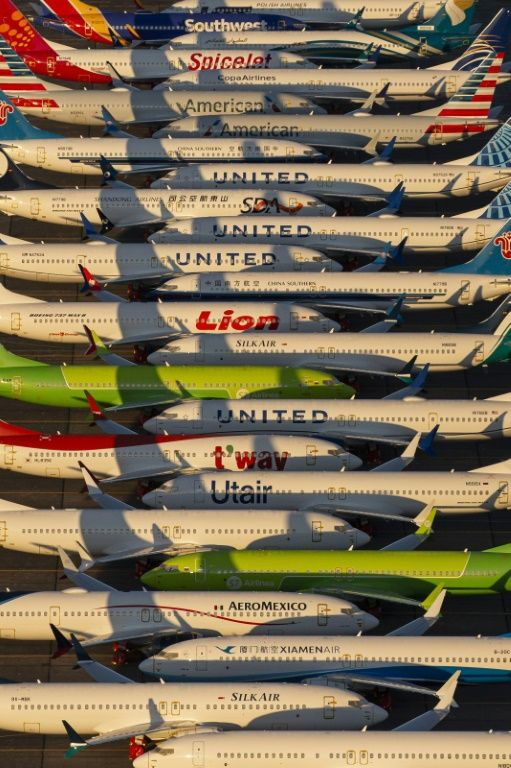Boeing 737 MAX Update: More Problems Found With Plane

KEY POINTS
- The Boeing 737 MAX has been grounded since last March because of a software problem the led to two fatal crashes
- Regulators have demanded a rigorous review before recertifying the plane for flight
- Boeing may take on an addition $5 billion in debt to shore up cash reserves
Amid efforts to correct software to get the Boeing 737 MAX back into the air, an internal audit reportedly has found issues related to the wiring that helps control the plane’s tail.
The New York Times reported Sunday the issue surfaced during an audit requested by the Federal Aviation Administration as part of the review process to get the plane flying again. The 737 MAX was taken out of service last March as a result of two fatal crashes that killed 346 people. The crashes were caused by a glitch in the software that erroneously sent the planes into nose dives.
The new revelation sent Boeing (BA) stock more 1% lower in Monday morning trading. Boeing officials reportedly are thinking about raising debt to shore up finances even though it had about $20 billion available at the end of September.
The wiring problem involves two bundles that are too close together, raising the possibility of a short circuit that could lead to a crash. The wires connect to a motor that controls the stabilizer, the horizontal panel on the tail. Boeing is trying to determine whether concern is justified. If so, the company said it would be relatively easy to fix the problem on the 800 planes already built.
The Times quoted sources as saying newly appointed CEO Dave Calhoun, who takes over officially Jan. 13, and former Chief Financial Officer Greg Smith discussed the problem in an internal conference call last week. The FAA was informed last month.
“We are working closely with the FAA and other regulators on a robust and thorough certification process to ensure a safe and compliant design,” Boeing spokesman Gordon Johndroe said in a statement to the Times. “We identified these issues as part of that rigorous process, and we are working with the FAA to perform the appropriate analysis. It would be premature to speculate as to whether this analysis will lead to any design changes.”
The Times said CFM International, a joint venture between General Electric and Safran that manufactures the plane’s engines, also informed the FAA it found a possible weakness in the rotors that could cause a part to shatter, but the potential problem was described as remote and no fix has been ordered.
Yet another problem uncovered was the inadvertent removal of a coating that protects the engine housing from a lightning strike.
"Our highest priority is ensuring the 737 Max meets all safety and regulatory requirements before it returns to service," a Boeing spokesperson told CNN. "We are working closely with the FAA and other regulators on a robust and thorough certification process to ensure a safe and compliant design."
Airlines globally have ordered about 5,000 MAXes, but the grounding has led Boeing to suspend production, forcing layoffs not only at the airplane-maker, but at parts suppliers as well. It abruptly sent CEO Dennis Muilenburg packing last month for alienating both the FAA and the public.
Putting the MAX back in the sky has been delayed several times, with Boeing now shooting for spring. Some major airlines, however, have taken the planes off their schedules through June.
On the financial front, the Wall Street Journal reported Monday with claims from the 346 families affected by the Lion Air and Ethiopian Airlines crashes looming, the company is considering taking on $5 billion in additional debt to cover costs as well as help it close its $4 billion acquisition of an 80% stake in Embraer SA, the Brazilian plane-maker. Boeing also may defer some capital expenditures and cut research and development as well as freeze further acquisitions to preserve cash.
© Copyright IBTimes 2025. All rights reserved.






















